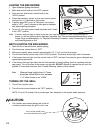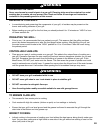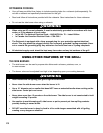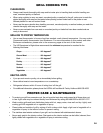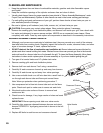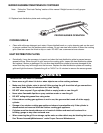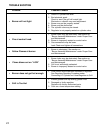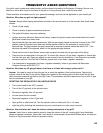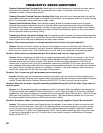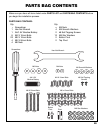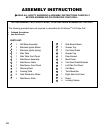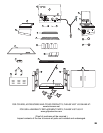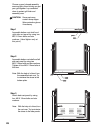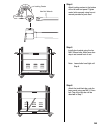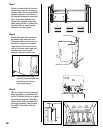Special offers from our partners!

Find Replacement BBQ Parts for 20,308 Models. Repair your BBQ today.

Cleaning Stainless Steel Cooking Grills: Wash grills with a mild detergent and rinse with hot water before
initial use and as needed. DO NOT use a commercial oven cleaner. For stubborn food residue, use a
degreaser and fiber or brass cleaning brush.
Cleaning Porcelain-Finished Cast-Iron Cooking Grills: Wash grills with a mild detergent and rinse with hot
water before initial use and as needed. For stubborn food residue, use a degreaser and fiber or brass cleaning
brush. Dry immediately using a soft cloth or paper towels.
Cleaning Heat Distribution Plate: Heat distribution plates should be cleaned whenever food or grease
drippings accumulate to reduce the chance of flare-ups. Wash heat distribution plates with a mild detergent
and rinse with hot water. Use a degreaser and fiber or brass cleaning brush to remove stubborn food residue.
Do not use a wire brush or metal scraper on porcelain-finished heat distribution plates, as they can scratch or
chip the porcelain finish and promote rusting.
Cleaning the Grease Tray and/or Grease Cup: The grease tray and/or grease cup (some models) should be
inspected before each grill use to reduce the chance of fire. Remove grease (a plastic spatula works well) and
wash all parts with a mild soap or degreaser and warm water solution.
Question: What causes grill parts to rust and what effect does it have on the grill materials?
Answer: Rusting is a natural oxidation process and may appear on cast-iron and steel parts. Rust will not
affect the short-term performance of your grill. However, weathering and extreme heat can cause a stainless
steel lid to turn a bronze color. This is discoloration, not rust, and is not considered a manufacturing defect.
Question: What causes my stainless steel grill lid to discolor and how do I clean my grill lid?
Answer: Smoke, weathering and high heat can cause a stainless steel grill lid to turn bronze in color. This is
not to be confused with rust and is not a product defect. Machine oils used in the manufacturing process of
stainless steel as well as cooking oils and a dirty grill lid can also encourage discoloration if the lid is not
cleaned prior to grill use. After your grill is assembled, remove the protective PVC film from your grill lid and
use a stainless steel cleaner and soft cloth to remove residual adhesive and oils from the inside and outside of
your grill lid. Never use abrasive cleaners or scrubbers. In addition to the initial cleaning, routine cleaning to
remove dirt, grease and oils will help discourage lid discoloration.
Question: Can I convert my grill from propane gas to natural gas?
Answer: Most gas grills are manufactured to exact specifications and are certified for either propane gas or
natural gas use only. However, some models can be converted safely with conversion kits available for specific
models. Contact Brinkmann Customer Service at 800-527-0717 to see if your grill can be converted.
Question: Why does the hose / regulator assembly supplied with my grill not fit the older LP gas tank I’ve
used for years?
Answer: U.S. Government regulates gas appliances and LP gas tanks. When regulations were changed, the
LP gas tank fittings were updated to ensure compliance. If your LP gas tank does not fit the hose / regulator
supplied with your new grill, the tank is outdated and must be replaced. Note: Effective April 1, 2002, all LP gas
tanks sold must include an "OPD" overflow protection device. This internal device prevents the LP gas tank
from being overfilled. Tanks without an OPD valve cannot be refilled.
Question: Sometimes I hear a humming sound coming from my gas regulator. Should I be concerned?
Answer: The humming sound is gas flowing through the regulator. A low volume of noise is normal and will
not interfere with the operation of your grill. If the humming noise is loud and excessive, you need to purge
air from the gas line or reset the regulator flow limiting device following the Regulator Resetting Procedure
under Connecting LP Cylinder and Hose/Regulator to Grill. This procedure should be done every time a new
LP gas tank is connected to your grill. For help, refer to your owner’s manual or call Brinkmann Customer
Service at 800-527-0717.
FREQUENTLY ASKED QUESTIONS
19



